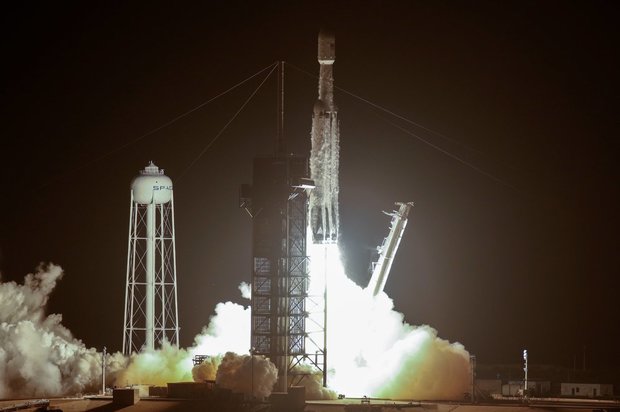SpaceX Successfully Launches 152 Sets of Cremated Remains into Orbit
If, as Carl Sagan said, “we are made of star stuff,” then returning human remains to space seems like a fitting interpretation of “dust to dust.” On June 24, the remains of 152 people launched into orbit aboard a SpaceX Falcon Heavy rocket in a futurist burial tradition that began as an idea in a 1931 pulp novella. The space dispersal, or space burial, was organized by Celestis, who charges customers between $5,000 and $12,000 for the privilege of sending one to seven grams of cremains into space in what they call a “uniquely compelling memorial experience.” The company has provided sub-orbital and orbital flights since 1997, hitching rides aboard existing missions.
One of the more spectacular options in the fast-growing field of alternative disposition, space burial offers a memorial option for those choosing cremation. The selected amount of ashes are placed in a metal capsule that can be etched with an epitaph, much like a tombstone. The capsules usually join other items in a planetary rideshare (though some companies have started to offer dedicated flights).
Space burial has been a popular—albeit expensive—disposition method since 1992, when Star Trek creator Gene Roddenberry’s ashes took a ride aboard the Columbia shuttle. For those who never achieve their dream of space flight in life, space burial can fulfill that wish in death. Known as the father of astrogeology, Gene Shoemaker contributed pivotal work to crater science and trained NASA astronauts in collecting specimens. His pioneering work led to a new understanding of asteroid science and species extinction. Although considered for an Apollo mission, he was disqualified from flight due to a medical condition. In 1999, his ashes flew aboard the Lunar Prospector, a spacecraft that ended its mission intentionally crashing into the south pole of the moon.
The moon is by no means the farthest place where human ashes have traveled. In 2006, the remains of Clyde Tombaugh, a self-taught astronomer who discovered Pluto, flew past that remote planet on board the New Horizons spacecraft. The New Horizons, now more than four billion miles from Earth, continues its mission, shooting into deep space at more than 30,000 miles per hour.
Once only possible with massive governmental investment and resource allocation, space exploration has become increasingly privatized as more accessible technology and available capital open the door to private space flight. In addition to space burial and tourism, these flights carry a variety of important items used for public and private research and communications. The Falcon Heavy’s payload also included satellites for the Air Force and the National Oceanic & Atmospheric Administration, an atomic clock meant to aid the navigation of self-flying spacecraft, and a solar sail, an experimental method of propulsion that uses the sun’s energy to move spacecraft through space. This was the first mission using the recycled Falcon Heavy rocket for the Defense Department in what SpaceX hopes will be a fruitful partnership with the federal government.
The launch, described as the most difficult SpaceX launch yet, placed satellites into three different orbits and successfully landed the two side boosters back in Florida. Although the rocket lost a core booster that didn’t hit its intended landing target, the overall success of the flight bodes well for the future of more cost-effective reusable rocket technology.
Although space burial remains a symbolic gesture that relies on old-fashioned cremation as the primary disposition method, the dramatic memorial holds appeal for those who feel an intimate connection with space and want to return their ashes to their ultimate cosmic source.
Article by Connecting Directors contributor Diana Eliza Ionescu




